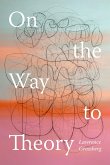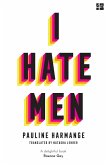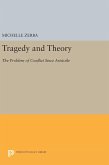This succinct introduction to modern theories of literature and the arts demonstrates how each theory is built and what it can accomplish. Represents a wide variety of theories, including phenomenological theory, hermeneutical theory, gestalt theory, reception theory, semiotic theory, Marxist theory, deconstruction, anthropological theory, and feminist theory. Uses classic literary texts, such as Keats's Ode on a Grecian Urn, Spenser's The Shephearde's Calender and T. S. Eliot's The Waste Land to illustrate his explanations. Includes key statements by the major proponents of each theory. Presents the different theories objectively, allowing students to decide which if any, they subscribe to. Gives students a sense of the potential of theory. Includes a glossary of technical terms.
Literary theory has become a branch of learning in its own right, and for teachers as well as students its complexities can sometimes be daunting. In this succinct introduction, Wolfgang Iser, himself a renowned theorist: * explains what "theory" is and why it is that there are so many different theories * deals in turn with those theories that have made the greatest impact in recent times, among them phenomenological theory, reception theory, semiotic theory, psychoanalytical theory, Marxist theory, deconstruction, art as experience, and feminist theory * outlines the main components of each approach and explains how it is constructed. Using classic literary texts, including Keats's Ode on a Grecian Urn, Spenser's The Shepheardes Calender, and T. S. Eliot's The Waste Land, Iser shows what a work of art looks like if viewed in terms of each of the theories concerned. He presents the different theories objectively, leaving it up to readers to decide which, if any, they subscribe to. In this way, he defuses students' fear of theory and demonstrates the potential of different theories for interpreting texts.
Literary theory has become a branch of learning in its own right, and for teachers as well as students its complexities can sometimes be daunting. In this succinct introduction, Wolfgang Iser, himself a renowned theorist: * explains what "theory" is and why it is that there are so many different theories * deals in turn with those theories that have made the greatest impact in recent times, among them phenomenological theory, reception theory, semiotic theory, psychoanalytical theory, Marxist theory, deconstruction, art as experience, and feminist theory * outlines the main components of each approach and explains how it is constructed. Using classic literary texts, including Keats's Ode on a Grecian Urn, Spenser's The Shepheardes Calender, and T. S. Eliot's The Waste Land, Iser shows what a work of art looks like if viewed in terms of each of the theories concerned. He presents the different theories objectively, leaving it up to readers to decide which, if any, they subscribe to. In this way, he defuses students' fear of theory and demonstrates the potential of different theories for interpreting texts.




